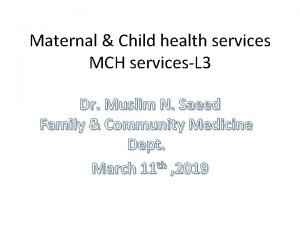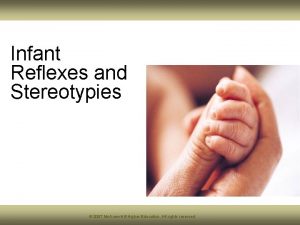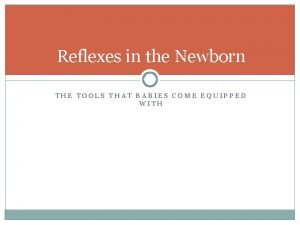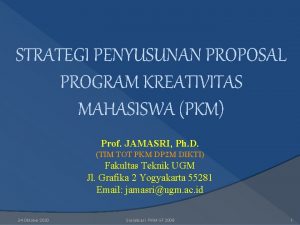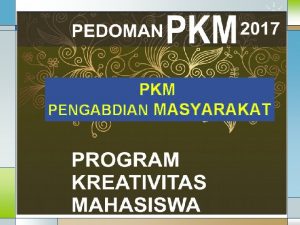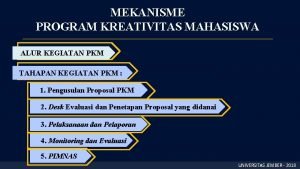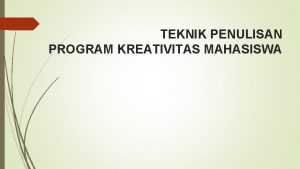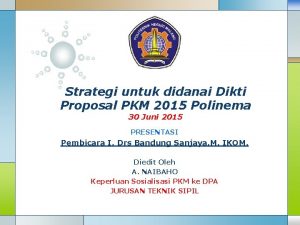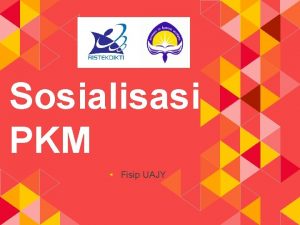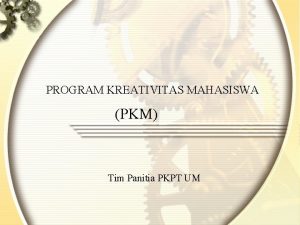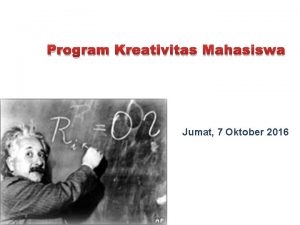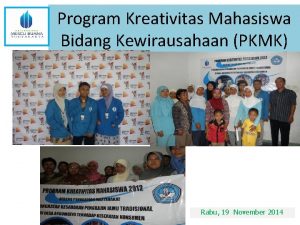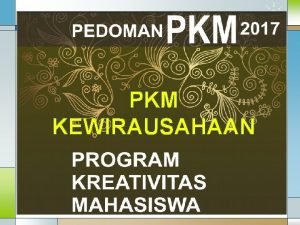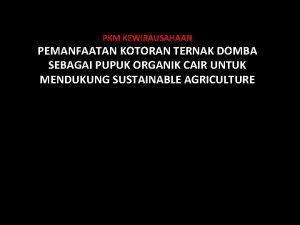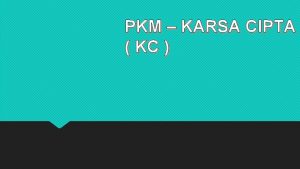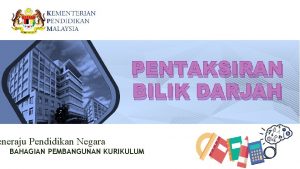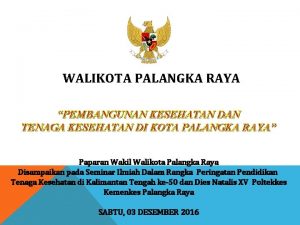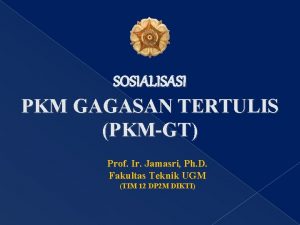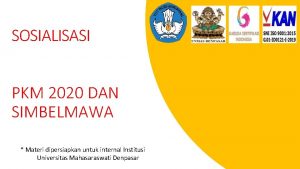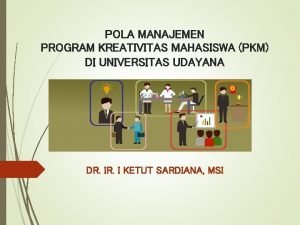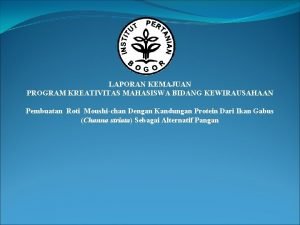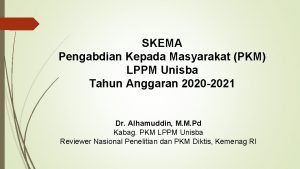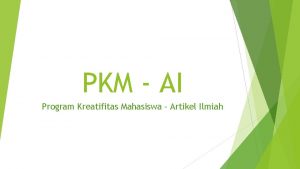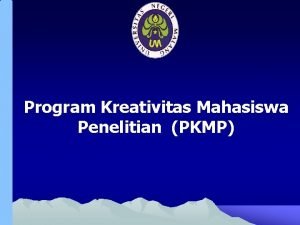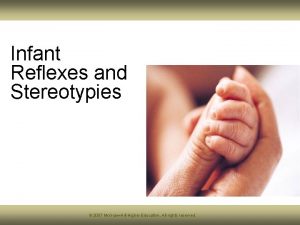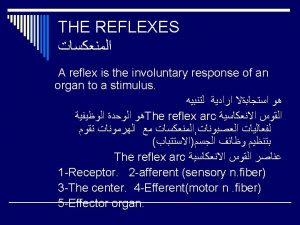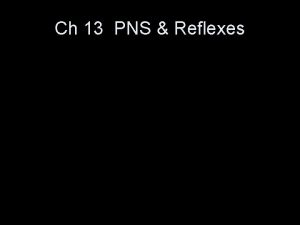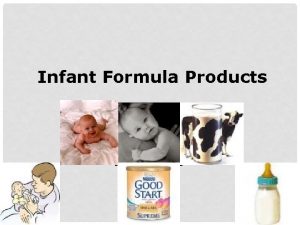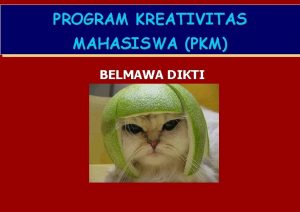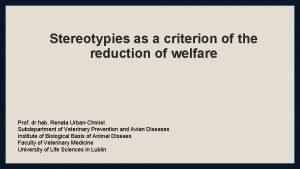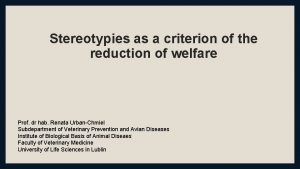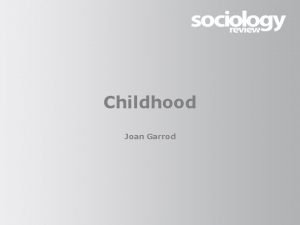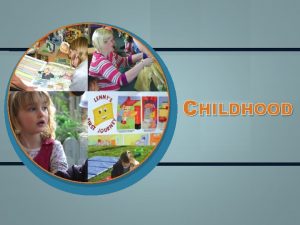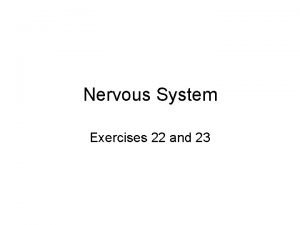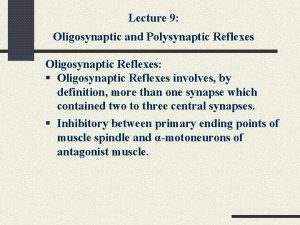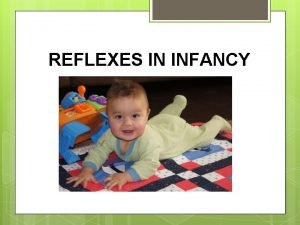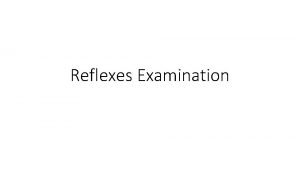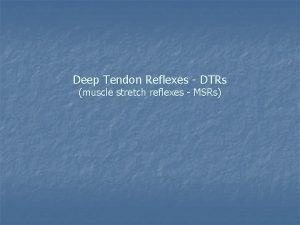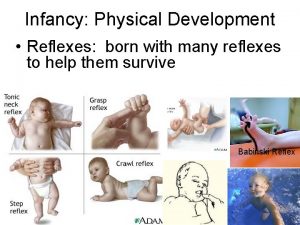PKM Childhood reflexes Infant reflexes and stereotypies are































- Slides: 31

PKM Childhood reflexes

Infant reflexes and stereotypies are very important in the process of development

Importance of Infant Reflexes • Reflexive movements occur during the last 4 months of prenatal life and the first 4 months after birth Reflexes occur sub cortically (below the level of the higher brain centers) E. g. , palmer grasp

Infant vs. Lifespan Reflexes • Most “infant” reflexes do not last beyond the first year • Reflexes that endure are called “lifespan” reflexes Knee-jerk reflex Flexor-withdrawal reflex

Infant vs. Lifespan Reflexes • Many of the reflexes do not completely disappear First, they are inhibited by the maturing nervous system Second, they are integrated into new movement behaviors

Role of the Reflexes in Survival • Primitive reflexes are important for Protection Nutrition Sucking reflex Rooting reflex Survival Labyrinthine reflex

Role of Reflexes in Developing Future Movement • Postural reflexes Prevalent belief: automatic movement is “practice” for future voluntary movement Other experts believe these reflexes may not be related to future motor development These reflexes disappear when voluntary behavior surfaces

Role of Reflexes in Developing Future Movement • When the stepping reflex is stimulated, walking may begin at an earlier age • Link between stimulation of the reflex preceding the disappearance phase and early movement • Small amounts of practice can lead to significant results

Reflexes as Diagnostic Tools • Can help determine the level of neurological maturation Reflexes are age-specific in normal, healthy infants • Moro reflex May signify a cerebral birth injury if lacking or asymmetrical • Asymmetric tonic neck reflex May indicate cerebral palsy or other neurological problem

Reflexes as Diagnostic Tools Reflex Moro Concern when lacking, weak, asymmetrical or persisting Cerebral birth injury Asymmetric Cerebral palsy; other neural tonic reflex damage

Reflexes as Diagnostic Tools • Milani Comparetti Neuromotor Development Examination Measures several infant reflexes from birth to 24 months Purpose: develop profile of child’s movement in relation to what is expected at a specific age Useful in determining motor delay

Pinpointing the Number of Infant Reflexes • Different terminologies used for same reflex by experts Rooting reflex = search reflex; cardinal points reflex • Reflexes are often poorly defined and more complex than once thought Palmar grasp vs. traction response

Primitive Reflexes ~ Palmar Grasp • The palmar grasp reflex of the most to emerge is one noticeable reflexes May predict handedness in adulthood • Appears in utero • Endures through the 4 th month postpartum • Negative • Leads palmer grasp: neurological problems; spasticity to voluntary reaching and grasping

Primitive Reflexes ~ Sucking • Occurs pre-and post- natally Babies are born with blisters on lips • Stimulated the lips by touching

Primitive Reflexes ~ Search • Helps the baby locate nourishment • Baby turns head toward the food • Usually works in conjunctions with sucking reflex • Contributes to head- and body-righting reflexes Stimulus ~ touching the cheek

Primitive Reflexes ~ Moro Reflex • Palm of hand lifts back of head • Hand is removed suddenly so that head begins to fall Head is supported • Moro reflex precedes the startle reflex and causes the arms and legs to extend immediately rather than flex • Disappears at 4 -6 months

Primitive Reflexes ~ Startle • Similar to the Moro reflex • May not appear until 2 -3 months after Moro disappears • Elicited by a rapid change of head position, by striking the surface that supports the baby, loud noise • Causes the arms and legs to flex immediately

Primitive Reflexes ~ Asymmetric Tonic Neck Reflex • Causes flexion on one side and extension on the other • Not always seen in newborn • Facilitates the development of bilateral body awareness

Primitive Reflexes ~ Plantar Grasp • The toes appear to be grasping • Stimulus is touching the ball of the foot • This reflex must disappear before the baby can stand or walk

Primitive Reflexes ~ Babinski Reflex • Elicited by a stimulus similar to plantar grasp, but response is different • Test of the pyramidal tract activity for later motor movement

Primitive Reflexes ~ Palmar Mandibular Reflex • Makes the eyes close, the mouth open, and/or neck flexes which tilts the head forward • Also called the Babkin reflex • Stimulus is pressure to both palms

Primitive Reflexes ~ Palmer Mental Reflex • Elicits a facial response when the base of the palm is scratched • Lower closes jaw opens and

Postural Reflexes ~ Stepping reflex is a forerunner to walking

Postural Reflexes ~ Crawling • Believed to be essential to the voluntary creeping movement • Observed from birth to 3 -4 months

Postural Reflexes ~ Swimming • Characterized by the baby’s swimming-like movements when held in a horizontal position

Postural Reflexes ~ Head-and-Body Righting • The head “rights” itself with the body when the body is turned to one side Body follows head • Precursor to rolling movements • Body righting may not be evident before month 5

Postural Reflexes ~ Parachuting Reflexes • Propping • Related • This reflexes to upright posture reflex is a conscious attempt to break a potential fall

Postural Reflexes ~ Labyrinthine • This reflex endures throughout most of the first year • Related • Head to upright posture tilts in the opposite direction of body tilt

Postural Reflexes ~ Pull-up Reflex When the baby is tipped backward, supporting arms flex in an effort to maintain the upright position

https: //www. youtube. com/watc h? v=0_5 Nr. DW 2 GLE

. P. References P. Shelov, M. M Caring for Your Baby and Young Child: Birth to Age 5, (2014) AAP
 Mikael ferm
Mikael ferm Infant reflexes chart
Infant reflexes chart Teratogens examples
Teratogens examples Infant reflexes chart
Infant reflexes chart Newborn baby reflexes chart
Newborn baby reflexes chart Early childhood middle childhood
Early childhood middle childhood Tahapan pkm
Tahapan pkm Poster pkm pm
Poster pkm pm Bidang ilmu dalam pkm
Bidang ilmu dalam pkm Tahapan pkm
Tahapan pkm Konsep pkm
Konsep pkm Jadwal kegiatan pkm kewirausahaan
Jadwal kegiatan pkm kewirausahaan Jadwal kegiatan pkm kewirausahaan
Jadwal kegiatan pkm kewirausahaan Jenis-jenis pkm
Jenis-jenis pkm Jenis-jenis pkm
Jenis-jenis pkm Jadwal kegiatan pkm kewirausahaan
Jadwal kegiatan pkm kewirausahaan Ide pkm kewirausahaan
Ide pkm kewirausahaan Pkm kewirausahaan pupuk organik
Pkm kewirausahaan pupuk organik Pkm karsa cipta adalah
Pkm karsa cipta adalah Pkm adalah
Pkm adalah Borang penjaminan kualiti pbd 2021
Borang penjaminan kualiti pbd 2021 Pkm jekan raya
Pkm jekan raya Perbedaan pkm gt dan ai
Perbedaan pkm gt dan ai Pkm
Pkm Tahapan pengumpulan pkm unud
Tahapan pengumpulan pkm unud Laporan kemajuan pkm k
Laporan kemajuan pkm k Pkm adalah
Pkm adalah Pengertian pkm
Pengertian pkm Pkmp
Pkmp What is visitor pre registration in picme
What is visitor pre registration in picme Keeping an infant safe and well section 7-3
Keeping an infant safe and well section 7-3 Kenmore park infant and nursery school
Kenmore park infant and nursery school

